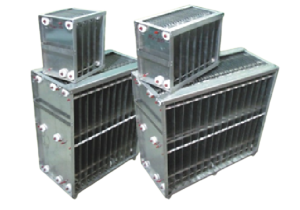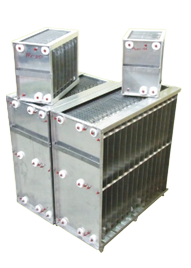What are Filter Modules?
Filter Modules are the core of electrostatic filter equipment and can be stacked horizontally as well as vertically to add air flow capacity as required by the customer.

Features
The filter modules are many times washable and re-usable during the life of the equipment. Maintenance and running costs are low when compared to conventional mechanical filters. We have incorporated safety features such as high voltage fault trip circuitry for reliable, safe and efficient functioning. These systems contribute to a safer, healthier work environment where toxic airborne pollutants are removed. We provide excellent factory support and product expertise based on years of industrial process emission control.
- Re-usable
- Safe & Secure
- Low Maintenance
- Eco Friendly
- Factory Support
Applications
These modular filters are used for custom-built applications & can be added module by module to suit various air flow rates. These modules are used as primary filters for class 100,0000 Clean Rooms & as prefilters for higher Class levels of Clean Rooms. When used as prefilters for higher class levels, they can increase the life of the terminal filters. The total pressure drop as compared to conventional prefilters is negligible. These filters can be used in a centralized system for removal of fumes, smoke, oil mist, coolant mist, dust and fine powders from many in – plant industrial processes which generate pollutants rendering the shop floor unhealthy.
How it Works
Each filter module can handle an air flow rate as specified. The required quantity of modules are placed in an MS painted enclosure. The air inlet side is placed in the air stream using a suitable adaptor ducting. The power pack feeding the electrostatic voltages to the Modules is separately mounted in a control panel near the MS enclosure with the electrical connections made through conduits. Prefilters and post filters are placed before and after the electrostatic filter module. Dust and file particulate are sucked into the filter module with the air stream. These first enter the prefilters which prevent large particles entering the modules. The fine particles then enter the modules where, between a series of parrallel aluminium plates, they receive a high positive charge. The positively charged particles then pass through another series of negatively charged aluminium plates. Here, the particles are attracted to the oppositely charged plate and stick to them like iron filings to a magnet, but with a difference – the particles remain adhered to the plates even when the electrostatic filter is powered off. The clean air, devoid of particles, escapes through the after filters. The postfilters help in distribution of the air flow through the electrostatic filter modules.

